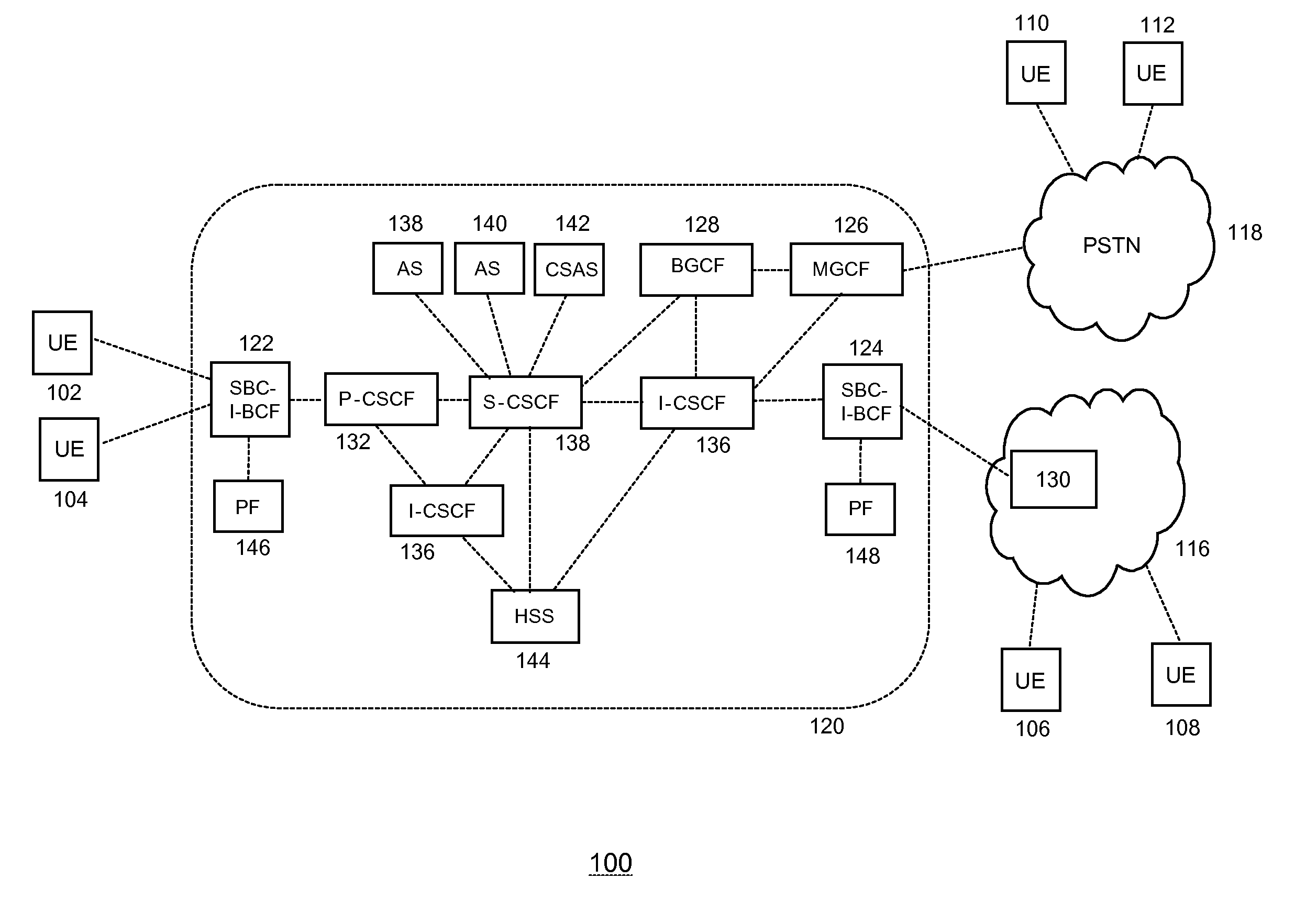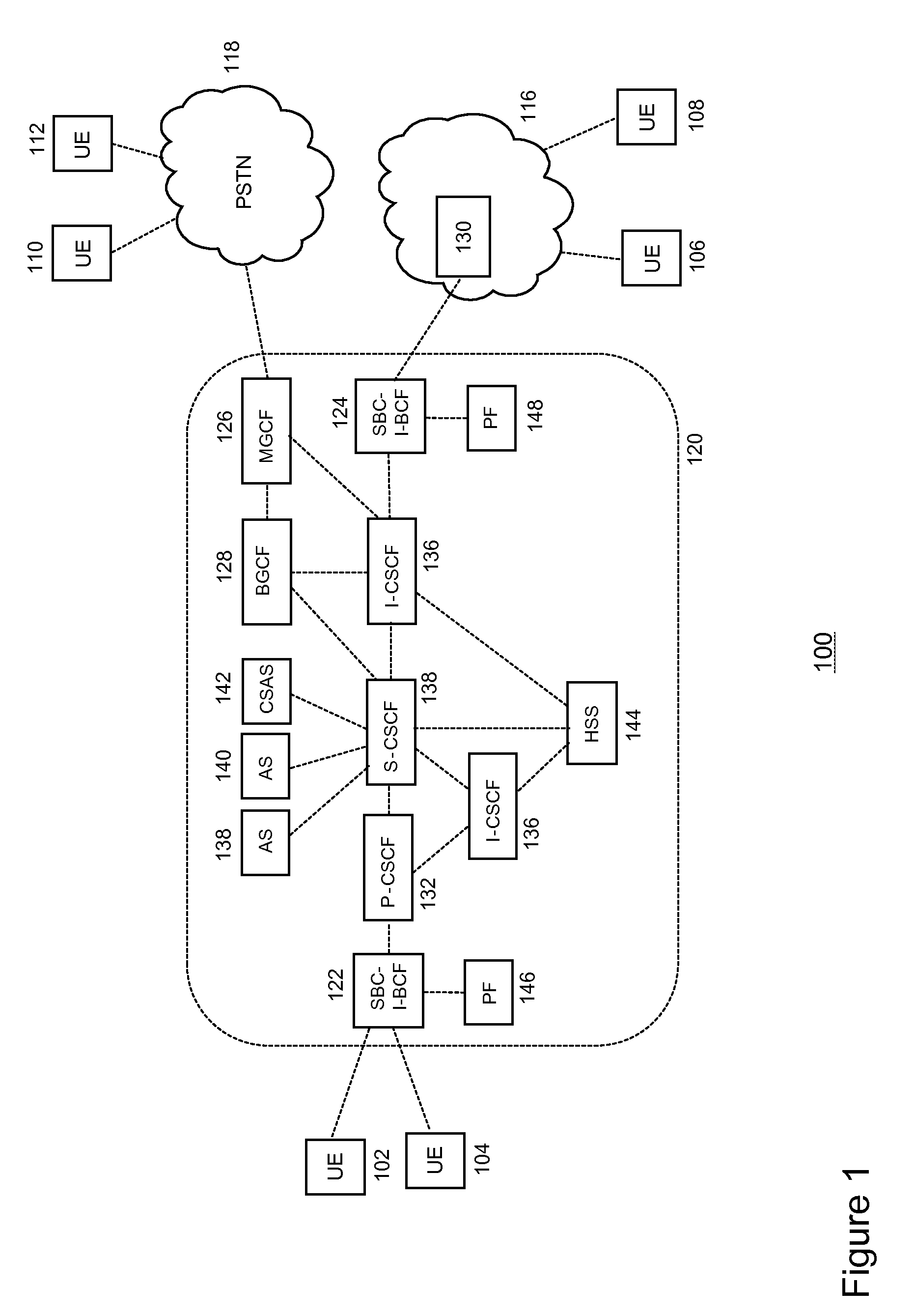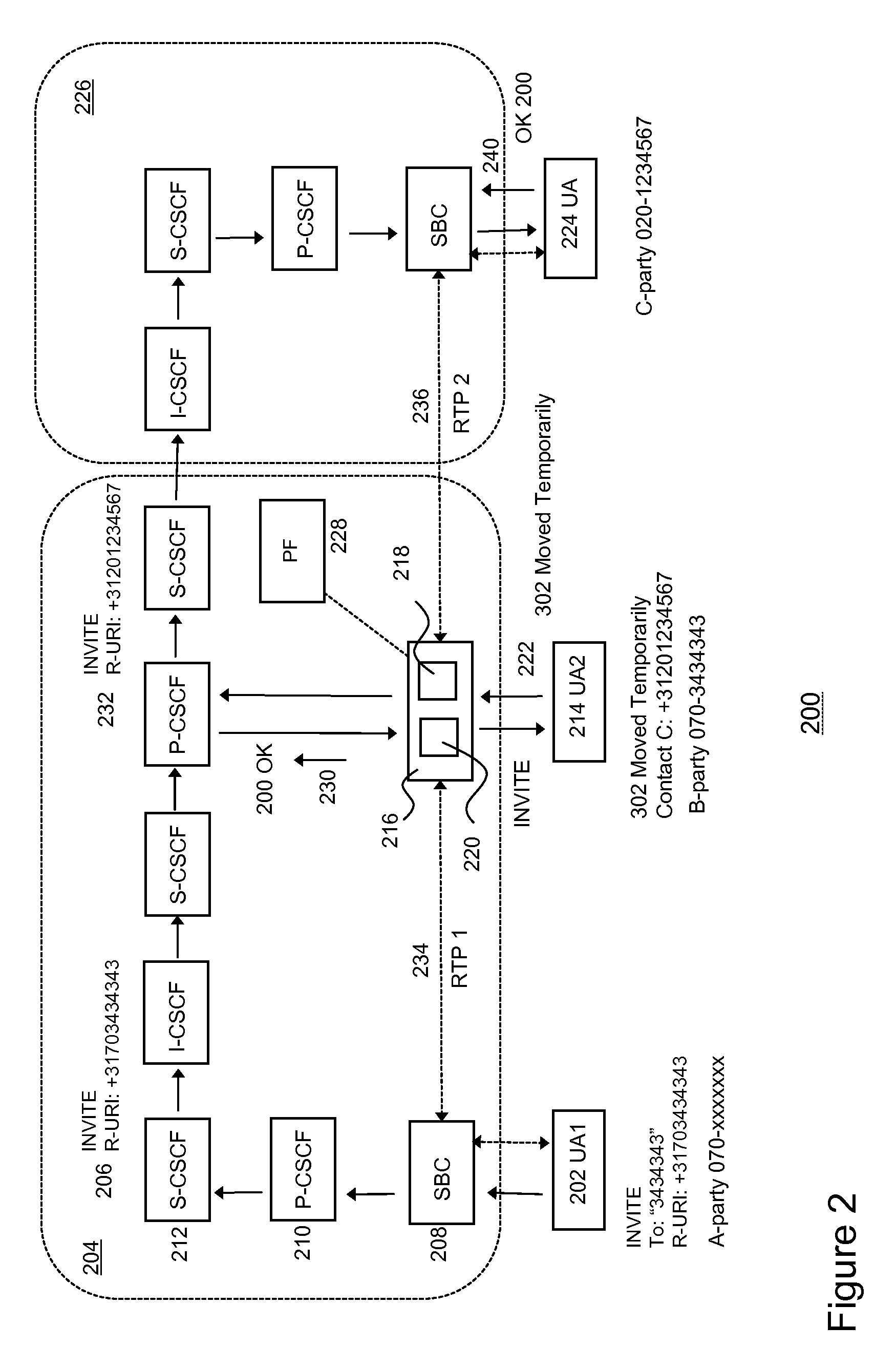Controlling a Session in a Service Provisioning System
- Summary
- Abstract
- Description
- Claims
- Application Information
AI Technical Summary
Benefits of technology
Problems solved by technology
Method used
Image
Examples
Embodiment Construction
[0034]FIG. 1 depicts a schematic of at least part of service provisioning system 100, in particular an IMS-based service provisioning system, according to one embodiment of the invention. The system comprises one or more terminals (UE's) 102-112 connected to an IMS platform 120. Terminals may be connected directly or via another network to the IMS. For terminals directly connected to the IMS, signaling and access control to the IMS is provided by a border network control node such as a session border controller (SBC) 122,124. For a Public Switched Telephone Network (PSTN), such as a wireline or a wireless type access network (e.g. GSM and UMTS), access may be provided by a Media Gateway Control Function (MGCF) 126 wherein a Breakout Gateway Control Function (BGCF) 128 determines which MGCF a call should go through to reach a local PSTN.
[0035]In one embodiment, an IP-based packet switched network 116 may relate to an IP-based enterprise network, wherein an IP-based private branch exc...
PUM
 Login to View More
Login to View More Abstract
Description
Claims
Application Information
 Login to View More
Login to View More - Generate Ideas
- Intellectual Property
- Life Sciences
- Materials
- Tech Scout
- Unparalleled Data Quality
- Higher Quality Content
- 60% Fewer Hallucinations
Browse by: Latest US Patents, China's latest patents, Technical Efficacy Thesaurus, Application Domain, Technology Topic, Popular Technical Reports.
© 2025 PatSnap. All rights reserved.Legal|Privacy policy|Modern Slavery Act Transparency Statement|Sitemap|About US| Contact US: help@patsnap.com



